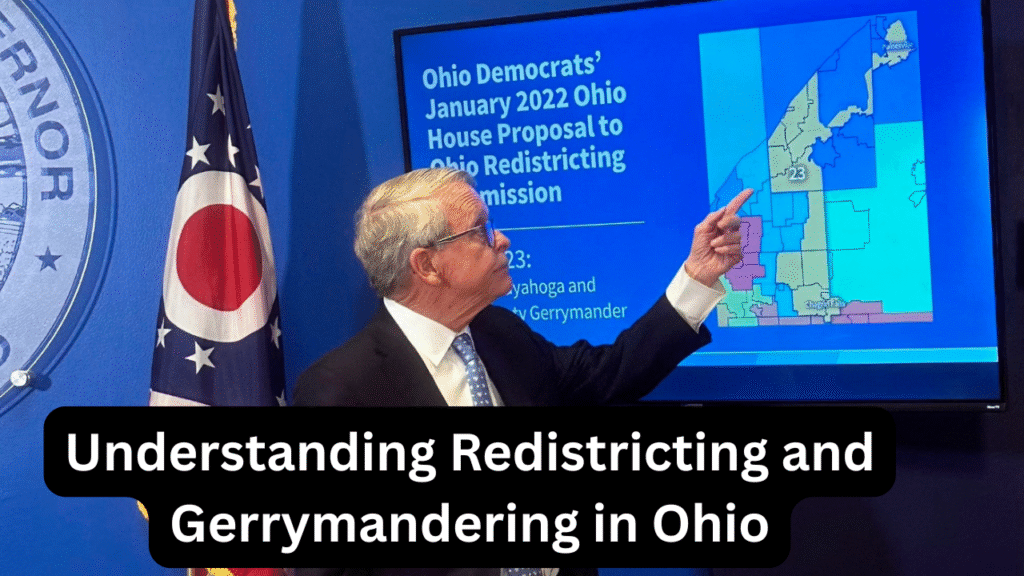
Redistricting and gerrymandering are critical concepts that shape Ohio’s political landscape. These processes influence how communities are represented in government, impacting election outcomes and policy decisions. Understanding what redistricting and gerrymandering mean, how they work in Ohio, and their consequences empowers voters to engage in efforts toward fair representation.
What Is Redistricting?
Redistricting is the process of redrawing the boundaries of electoral districts. It occurs every ten years after the U.S. Census to reflect population changes and ensure equal representation.
- Districts are redrawn for the U.S. House of Representatives, state legislatures, and local offices.
- The goal is to maintain roughly equal population sizes in each district, respecting the “one person, one vote” principle.
- Redistricting also considers factors like geographic contiguity and communities of interest.
How Does Ohio Handle Redistricting?
Ohio uses a bipartisan commission model for redrawing its legislative districts. This commission includes members appointed by both the majority and minority parties in the state legislature, as well as citizen members.
- The Ohio Redistricting Commission is responsible for creating district maps.
- Maps must comply with state and federal laws, including the Voting Rights Act.
- The commission must balance fairness, competitiveness, and community integrity.
What Is Gerrymandering?
Gerrymandering is the manipulation of district boundaries to favor a particular political party, group, or incumbent. It often results in oddly shaped districts designed to dilute or concentrate voting power.
- Two common types of gerrymandering are “cracking” and “packing.”
- Cracking splits a voting group across multiple districts to reduce their influence.
- Packing concentrates a group into a single district to minimize their impact elsewhere.
- Gerrymandering undermines democratic principles by skewing representation away from voter preferences.
The Impact of Gerrymandering in Ohio
Gerrymandering affects Ohio’s politics and policy in several ways:
- Reduced Electoral Competitiveness
Safe districts for one party can discourage voter turnout and reduce accountability. - Unfair Representation
District maps may not accurately reflect the political makeup of the population. - Polarization
Gerrymandered districts often produce more extreme candidates, increasing political divisions. - Legal Challenges
Ohio’s maps have faced court cases alleging unfairness or violation of constitutional rights.
Reform Efforts and Challenges
Ohio has seen various efforts to improve redistricting fairness:
- Constitutional Amendments
Voters approved measures to create a bipartisan commission and set criteria for fair maps. - Transparency Measures
Public input and access to draft maps have increased. - Ongoing Debate
Despite reforms, accusations of partisan influence persist, and legal battles continue.
How Redistricting Affects Voters
- Representation
Fair districts help ensure communities have a voice in government. - Policy Outcomes
Who gets elected influences laws on education, healthcare, and infrastructure. - Voter Confidence
Transparent and fair redistricting builds trust in the electoral system.
How Citizens Can Engage
- Stay informed about redistricting timelines and proposals.
- Participate in public hearings or submit feedback on draft maps.
- Support organizations advocating for fair redistricting.
- Vote in elections for officials responsible for redistricting.
Overview Table: Redistricting and Gerrymandering in Ohio
| Topic | Description | Impact | Key Participants |
|---|---|---|---|
| Redistricting | Redrawing electoral district boundaries every 10 years | Ensures equal population and representation | Ohio Redistricting Commission, Legislature |
| Gerrymandering | Manipulating boundaries to favor parties or groups | Distorts representation and reduces fairness | Political parties, map drawers |
| Types of Gerrymandering | Cracking and packing strategies | Dilutes or concentrates voting power | Map designers, political operatives |
| Reform Efforts | Bipartisan commissions, transparency, legal actions | Seeks fairer and more competitive districts | Voters, advocacy groups, courts |
| Voter Impact | Affects representation, policy, and trust | Shapes political power and governance | Citizens, elected officials |
FAQs
Q1: How often does Ohio redraw its district maps?
Every 10 years, following the federal census.
Q2: Who controls the redistricting process in Ohio?
A bipartisan Ohio Redistricting Commission composed of legislators and citizen members.
Q3: What can I do if I believe gerrymandering has occurred?
You can participate in public hearings, support reform efforts, and engage in legal or advocacy actions.

